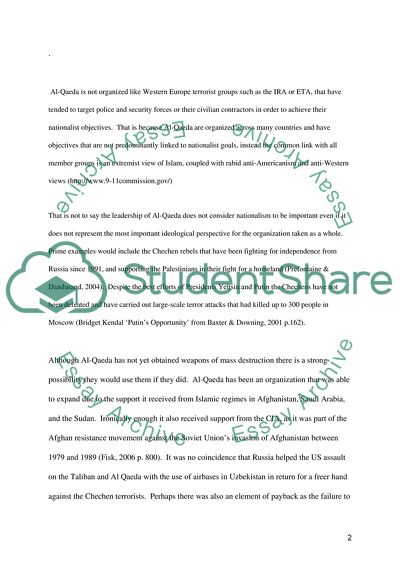Cite this document
(Al-Qaeda Terrorist Organization Case Study Example | Topics and Well Written Essays - 2201 words, n.d.)
Al-Qaeda Terrorist Organization Case Study Example | Topics and Well Written Essays - 2201 words. Retrieved from https://studentshare.org/politics/1712708-international-organizations-in-global-politics-transnational-crime-and-terrorism
Al-Qaeda Terrorist Organization Case Study Example | Topics and Well Written Essays - 2201 words. Retrieved from https://studentshare.org/politics/1712708-international-organizations-in-global-politics-transnational-crime-and-terrorism
(Al-Qaeda Terrorist Organization Case Study Example | Topics and Well Written Essays - 2201 Words)
Al-Qaeda Terrorist Organization Case Study Example | Topics and Well Written Essays - 2201 Words. https://studentshare.org/politics/1712708-international-organizations-in-global-politics-transnational-crime-and-terrorism.
Al-Qaeda Terrorist Organization Case Study Example | Topics and Well Written Essays - 2201 Words. https://studentshare.org/politics/1712708-international-organizations-in-global-politics-transnational-crime-and-terrorism.
“Al-Qaeda Terrorist Organization Case Study Example | Topics and Well Written Essays - 2201 Words”. https://studentshare.org/politics/1712708-international-organizations-in-global-politics-transnational-crime-and-terrorism.


